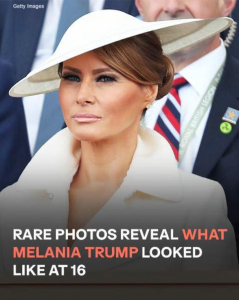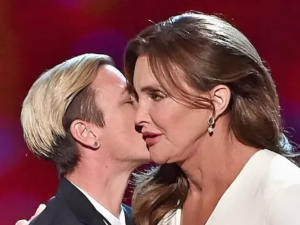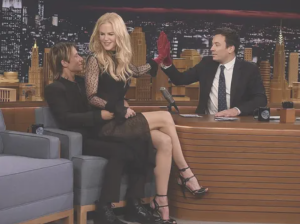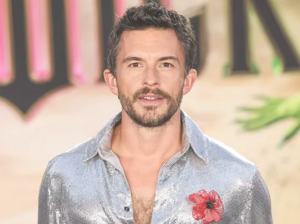 Melania: From Slovenian Small Town to World Stage — How Her Past Still Shapes Her Today
Melania: From Slovenian Small Town to World Stage — How Her Past Still Shapes Her Today
Approx. 1100 words
Melania Trump, former First Lady of the United States, has always carried an air of mystery and quiet strength. From her humble beginnings in the small Slovenian town of Sevnica to the dazzling lights of New York’s high society and the global spotlight of the White House, her life journey reads like a modern-day fairytale. Yet, behind the glamour and global attention lies a woman deeply shaped by her past—her upbringing, culture, and personal values—which continue to influence her public image, political stance, and personal identity to this day.
 Humble Beginnings in Sevnica
Humble Beginnings in Sevnica
Born Melanija Knavs on April 26, 1970, Melania grew up in Sevnica, then part of communist Yugoslavia. The small industrial town, nestled along the Sava River, was a world away from the opulent life she would later lead. Her father, Viktor Knavs, was a car dealer, and her mother, Amalija, worked in the textile industry. The Knavs family wasn’t wealthy by Western standards, but they enjoyed a modestly comfortable life in the context of socialist Slovenia.
Melania’s early years were marked by discipline, modesty, and a strong sense of family. Her mother’s work in fashion and design sparked Melania’s early interest in modeling. As a child, she was said to be quiet, studious, and well-mannered—a pattern that would follow her into adulthood. Her friends from Sevnica often describe her as ambitious but never boastful, driven but never ostentatious.
A Leap into the World of Fashion
Melania’s path to international recognition began in her teenage years. At just 16, she began modeling and eventually signed with an agency in Milan. Her name was changed from Melanija Knavs to the more Western-friendly Melania Knauss. She later moved to Paris and eventually settled in New York in the mid-1990s, where she began to gain serious traction in the fashion industry.
Though her modeling career never quite reached supermodel status, Melania worked steadily, appearing in various magazines and advertising campaigns. Her elegant features, Eastern European charm, and poised demeanor stood out in a cutthroat industry dominated by louder personalities. Even during these years, Melania avoided the limelight and rarely gave interviews—an early sign of the guarded privacy she would maintain for much of her life.
 Love and Life with Donald Trump
Love and Life with Donald Trump
Melania met real estate mogul Donald Trump in 1998 at a New York Fashion Week party. Their relationship was initially met with skepticism, especially given the 24-year age gap and Trump’s high-profile persona. But Melania held her own. She was not easily impressed and reportedly turned him down when he first asked for her number, insisting he provide his contact information instead.
After several years of on-and-off dating, the couple married in 2005 in a lavish Palm Beach ceremony. The guest list included celebrities, politicians, and media tycoons, signaling her full entry into America’s elite circles. A year later, Melania gave birth to their son, Barron Trump.
Throughout Trump’s rise in the political arena, Melania maintained a reserved role. Her appearances were calculated, her words measured. As First Lady, she launched the “Be Best” campaign focused on children’s well-being, online safety, and opioid abuse. While the initiative received mixed reviews, it reflected her personal concerns as a mother and her desire to promote empathy and resilience in children.
 The Slovenian Identity That Never Faded
The Slovenian Identity That Never Faded
Despite decades in the U.S., Melania’s Slovenian roots remain deeply ingrained. She speaks Slovenian fluently and often communicates in her native tongue with her parents and son. She has been known to cook traditional Slovenian dishes and celebrate cultural traditions quietly within her family. Her parents even moved to the United States and became naturalized citizens, largely staying out of the limelight while remaining a core part of her inner circle.
Melania’s identity as an immigrant also adds a unique layer to her public persona. She is only the second First Lady in U.S. history born outside the United States, after Louisa Adams. Yet unlike other political figures who wear their immigrant backgrounds as a badge of honor, Melania has rarely spoken about hers in public. That reticence is telling—it reflects a deeply European sensibility where modesty and privacy are virtues, not shortcomings.
In many ways, Melania represents a clash of two worlds: the reserved, traditional values of her Slovenian upbringing and the bombastic, media-driven American political sphere she entered through marriage. This contrast has made her a subject of fascination and criticism alike.
Public Perception: Quiet Power or Reluctant Role?
Melania Trump has always been a controversial figure in American political culture, not because of what she has done, but often because of what she hasn’t. Her silence during many of her husband’s most turbulent moments in office left room for speculation: Was she complicit, indifferent, or silently resistant?
Those who have worked with her describe her as intelligent, calculated, and highly protective of her privacy and family. Critics often label her distant or unengaged, especially compared to more publicly active First Ladies like Michelle Obama or Hillary Clinton. Supporters, however, view her as graceful and dignified—someone who refused to be politicized.
One of her most defining moments came when she wore a jacket emblazoned with the words “I REALLY DON’T CARE, DO U?” while visiting a migrant child detention center in 2018. The jacket sparked international outrage and remains a symbol of her ambiguous public messaging. Melania later claimed the message was aimed at the media, not the children—but by then, the damage was done.
Life After the White House
Since leaving Washington in 2021, Melania has retreated even further from the public eye. She resides mostly at Mar-a-Lago in Palm Beach, rarely making public appearances. Her focus appears to be on raising Barron and maintaining her personal life away from the political spotlight. Still, she remains a potent figure in the Trump brand, and there is much speculation about her potential role if Donald Trump returns to the political arena.
Melania has launched initiatives such as “Fostering the Future,” a scholarship program aimed at supporting young people aging out of the foster care system. The initiative reflects a continuation of her interest in children’s welfare, but it has also been met with questions about its transparency and impact.
Legacy of a Complex Figure
Melania Trump’s legacy is still being written. She is a woman of contradictions—an immigrant who became First Lady under a president known for hardline immigration policies; a former model who shunned public attention; a traditional wife and mother who held one of the most scrutinized roles in American politics.
What remains clear is that her past—rooted in the modest streets of Sevnica, shaped by Eastern European values and a tightly-knit family culture—still forms the core of who she is. It influences her mannerisms, her choices, and even her silences.
In an era dominated by social media and constant commentary, Melania Trump remains an enigma. Whether admired for her elegance and resilience or criticized for her lack of transparency, her story is a reminder that the past never truly leaves us—it follows, shapes, and defines us, even as we stand on the world’s biggest stage.
